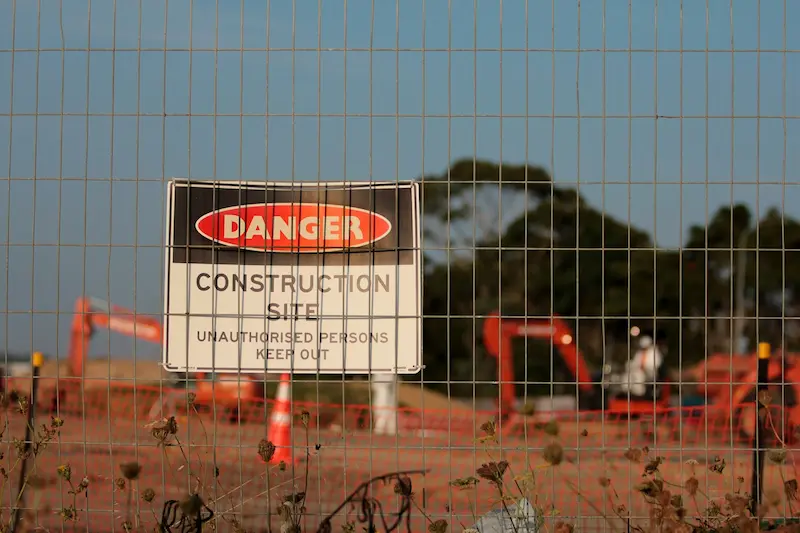What Are The Penalties For Health and Safety in the UK?
The penalties for health and safety failures have risen sharply across the UK, fundamentally changing the compliance equation for companies. Businesses across all sectors now face stricter scrutiny, higher fines, and more rigorous prosecution standards than ever before.
When businesses fail to adequately plan work, conduct proper risk assessments, or implement safe systems of work, the consequences are severe and wide-ranging. Recent prosecutions have seen penalties ranging from hundreds of thousands to several million pounds, with courts consistently increasing fine levels to ensure genuine financial impact.
For high-risk sectors like construction, understanding the penalties for health and safety violations and maintaining robust compliance systems is now a critical business priority that affects everything from operational costs to market reputation.
If your business is facing a health and safety investigation, expert legal advice from My Commercial Lawyers can help protect your interests and navigate the enforcement process effectively.

What Are the Penalties for Health and Safety in the UK?
The Health and Safety Executive (HSE) have multiple enforcement tools at its disposal, each carrying different levels of severity and consequence. Improvement notices require specific breaches to be corrected within set timeframes, while prohibition notices immediately halt activities deemed to pose serious risk. For the most serious cases, criminal prosecution can result not only in substantial fines but also potential imprisonment for company directors found personally culpable.
How Fines Are Calculated
The Sentencing Council’s Definitive Guidelines create a structured framework for calculating penalties. Courts consider three key factors: the company’s culpability (ranging from minor failings to deliberate breaches), the risk of harm created (not just actual harm caused), and the organisation’s size based on annual turnover. This structured approach ensures penalties are proportionate to both the seriousness of the breach and the company’s ability to pay.
The size of your business significantly impacts potential penalties:
- Micro companies (under £2 million turnover): Starting fine £250,000 for serious offences
- Large companies (over £50 million turnover): Starting fines of £4 million for serious breaches
- Very large organisations: No prescribed upper limits with complete court discretion
The trend is clear. Despite fewer prosecutions (216 in 2022/2023), the HSE maintains a 94% conviction rate, demonstrating selective prosecution of strong cases. More importantly for businesses, successful prosecutions consistently result in higher penalties as courts demonstrate a willingness to impose fines that genuinely impact company finances and reputation.

What Are the Main Health and Safety Laws in the UK?
UK health and safety law centres on the Health and Safety at Work etc. Act 1974 (HASAW), which establishes the overarching framework requiring employers to ensure employee health, safety and welfare “so far as is reasonably practicable.” This landmark legislation places comprehensive duties on employers to provide safe working environments, adequate training, proper welfare provisions, and relevant information and supervision.
Several crucial regulations support this primary legislation by addressing specific workplace risks. The Management of Health and Safety at Work Regulations 1999, require employers to actively assess and manage workplace risks, appoint competent persons to oversee safety, and maintain written health and safety policies for businesses with five or more employees.
Other vital regulations include:
- Personal Protective Equipment (PPE) Regulations 2018 – mandate free provision of suitable protective equipment when risks cannot be controlled by other means
- Manual Handling Operations Regulations 1992 – require risk assessments for lifting and moving tasks
- RIDDOR 2013 – makes incident reporting legally mandatory for deaths, serious injuries, and dangerous occurrences
For construction businesses, these regulations are particularly critical due to the sector’s inherent safety risks. The construction sector accounts for over 40% of occupational cancer deaths and faces some of the strictest compliance requirements due to inherent workplace dangers, with more working days lost to work-related illnesses than injuries.

What Is the Minimum Requirement to Be Prosecuted Under Health and Safety?
The HSE does not prosecute randomly but follows a structured decision-making process using a two-stage test similar to that employed by the Crown Prosecution Service. The first stage involves an evidential test determining whether there’s sufficient evidence for realistic conviction prospects, while the second stage considers whether prosecution serves the public interest.
The HSE’s 94% conviction rate demonstrates its effectiveness in meeting the evidential test through careful case selection. However, the public interest test reveals when prosecution becomes highly likely. There’s strong presumption toward prosecution when specific factors are present, including when a death has occurred, when Improvement or Prohibition Notices have been ignored, or when there has been reckless disregard for health and safety requirements.
Prosecution is also presumed appropriate when:
- The company’s safety management falls far below required standards
- False information has been supplied wilfully to deceive
- HSE inspectors have been intentionally obstructed
Importantly, businesses can significantly reduce prosecution risk through proactive compliance. This includes implementing comprehensive training programs, conducting regular documented risk assessments, performing routine health and safety audits, and cooperating fully with HSE inspectors.
When notices are issued, companies that demonstrate genuine efforts to comply within specified timescales make prosecution far less likely.

What Non-compliance Really Costs Your Business
The consequences of health and safety failures extend far beyond immediate financial penalties, creating multiple cost categories that can devastate businesses. The most tragic consequence involves needless suffering for individuals and families affected by preventable workplace incidents, representing the true human cost of safety failures.
Beyond the average £145,000 prosecution fine, companies face additional financial burdens under the HSE’s “Fee For Intervention” scheme, where businesses breaching health and safety laws become liable for the HSE’s costs for inspection, investigation, and enforcement activities. These charges accumulate quickly and add substantial amounts to the total financial burden, alongside lost productivity from work stoppages and increased insurance premiums.
Reputational damage often proves even more costly than direct penalties. HSE enforcement actions become public record and can severely impact a company’s ability to win contracts, maintain client relationships, and attract quality employees. In the construction industry, where safety records increasingly influence tender decisions, reputational harm can threaten business viability.
Several factors make health and safety management particularly challenging in construction:
- Constantly changing sites with varied risks
- Multiple trades working simultaneously
- Pre-existing hazards like asbestos
- Complex employment structures with self-employed workers and small companies
This complexity makes effective health and safety management both critical and challenging, but failure to meet legal obligations can result in consequences that involve more than just financial penalties.
We specialise in helping construction companies navigate HSE investigations, respond to enforcement notices, and avoid costly legal penalties.
Our experienced team understands the unique challenges facing businesses across all sectors and can provide the expert guidance needed to protect your interests. Contact us today for comprehensive legal support tailored to your specific health and safety compliance needs.

